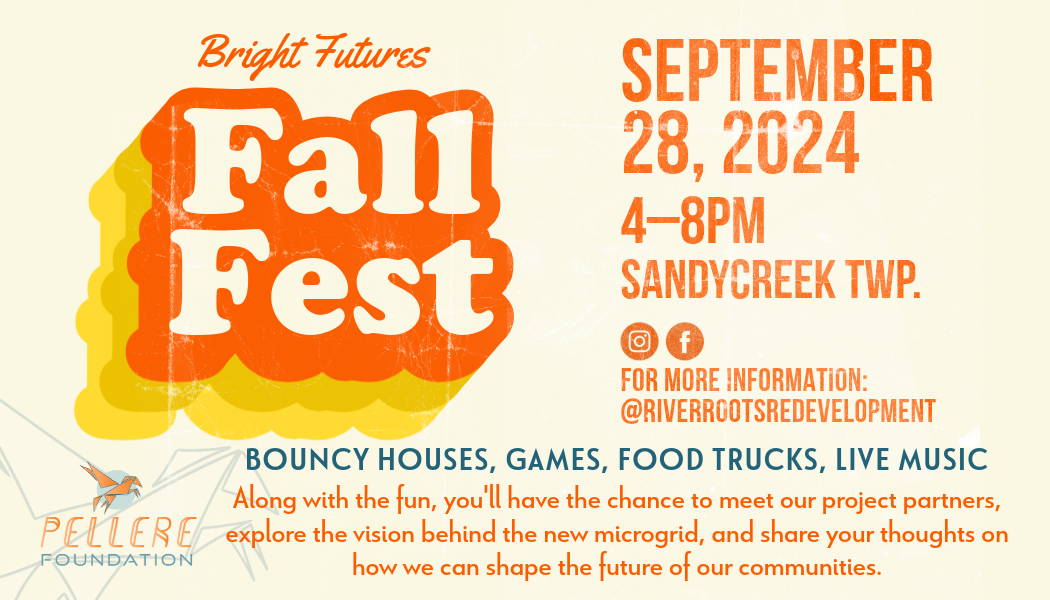Category: River Roots Redevelopment Column
-
Powering Progress: Cleaner Energy Storage Solutions for a Greener Future
Last week, we heard from Caleb Dawson of Advanced Power & Energy on the cleaner, safer, and more reliable energy storage solution found in nickel-zinc batteries. Here in the Oil Region, we are surrounded by the beauty of both our landscapes and waterways. It’s something that we want to protect—to steward. And this area is… Read more
-
Advanced Power & Energy: Nickel-Zinc Batteries
Over the last two weeks, we’ve reflected on Pennsylvania’s historical contribution to energy and how our Commonwealth can help lead the next energy revolution with new green energy technologies. We’ve covered the growth in the renewable energy job market, and last week, we looked at what these changes mean for local economies. Today, I want… Read more
-
Pennsylvania Poised to Become an Energy Leader Again – Part 2
Selina Pedi-Smith with Guest Writer: Colin Russ of RAD Solar Last week, we discussed Pennsylvania’s proud energy history and how renewables are offering new opportunities. Let’s explore further why now is the time to embrace this shift. Recent developments in energy pricing highlight why moving toward renewables isn’t just a choice but a necessity. The… Read more
-
3D Printed Homes: The Future of Affordable, Sustainable Living?
Imagine watching a house being built—not with hammer and nails, but by a machine that “prints” it, layer by layer, just like your home printer creates an image on a page. It may sound futuristic, but 3D printing is becoming a reality in construction, with a skilled team of professionals working behind the scenes to… Read more
-
Bright Futures Fall Fest

Pellere Foundation is Hosting a Community Fun Day – Sept. 28th On September 28th, from 4–8 pm, join us for an exciting event in Sandycreek Township, where we’re blending fun, community, and innovation! The Pellere Foundation is hosting a community fun day to showcase our cutting-edge LEAP project, which aims to revolutionize energy use in… Read more
-
What is a Microgrid and Why Does It Matter?
If you’ve heard us talk about the exciting new LEAP grant project coming to Venango County, you’ve probably heard us say that a microgrid is a key part of its design. But what exactly is a microgrid, and why should you care about it? What is a Microgrid? A microgrid is a small, local energy… Read more
-
Agrivoltaics, what’s that?
Whenever solar comes up in conversation, something that I often hear is the concern about putting solar arrays on land that could be used for other things, particularly farm land. Sure, we can avoid this by putting solar panels on roofs, but is that the only way? Enter agrivoltaics (or agrisolar, agrophotovoltaics, dual-use solar). Agrivoltaics… Read more
-
Ben Franklin Technology Partners
A Catalyst for Regional Innovation By: Selina Pedi-Smith, Founder, Pellere Foundationwww.linkedin.com/in/selinapedismithGuest Writer Building on the importance of partnerships in community redevelopment that we explored last week, I’d like to shine a spotlight on one of our longest-standing and most impactful collaborators, Ben Franklin Technology Partners. A driving force in Pennsylvania’s entrepreneurial ecosystem for nearly 40… Read more
-
Partnerships in Community Redevelopment
The Key to Sustainable Success By: Selina Pedi-Smith, Founder, Pellere Foundationwww.linkedin.com/in/selinapedismithGuest Writer Community redevelopment is a multifaceted undertaking requiring a robust blend of vision, dedication, and collaboration. One ongoing model of such collaboration is our very own LEAP (Local Energy Action Program) project, spearheaded by the Department of Energy and involving numerous stakeholders, including our… Read more
-
Community Coffee Chats on Tour
Summer is flying by and there has been a lot going on behind the scenes that we are hoping to be able to share soon! Hint: think large-scale 3D printers, agrivoltaics, and new business opportunities. During the month of June, we took a break from Foxburg Fridays at Divani. But now, Community Coffee Chats are… Read more
-
Kickoff Meeting for Communities LEAP Initiative: Paving the Way for Energy Resilience and Job Creation in Venango County
On Wednesday, July 10th, at 3 PM, a pivotal kickoff meeting was held to mark the commencement of a groundbreaking project under the Department of Energy’s Communities Local Energy Action Program (Communities LEAP). The meeting brought together an impressive array of representatives from the Pellere Foundation, the National Renewable Energy Lab (NREL), Venango County, DBS… Read more
-
Ecological Buffers
Ecological or riparian buffers or greenways are the areas along the edge of a development project that are put in place to protect sensitive surrounding areas like wetlands or nesting sites. Their purpose is to lessen the impacts of the project on these critical areas. They are also used to mitigate negative impacts on watershed… Read more